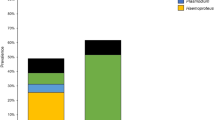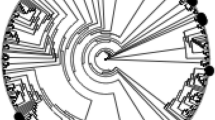Abstract
Swifts (Apodidae) are an unusual group of birds that spend most of their lives in flight, landing only when breeding. Although this aerial lifestyle greatly reduces their likelihood of being bitten by vectors and infected by vector-born parasites, swifts can still be heavily infested during breeding by nest-based vectors such as louse flies (Hippoboscidae). Here, we investigated host, vector, and vector-borne parasite relationships in the three most widespread swift species in the Western Palearctic (WP): common swifts (Apus apus), pallid swifts (A. pallidus), and alpine swifts (Tachymarptis melba), their nest-based louse flies (Crataerina pallida and C. melbae) and avian haemosporidians (genera Haemoproteus, Plasmodium, and Leucocytozoon). Studies of haemosporidian infections in Apodidae remain limited, with clear evidence of infection found to date in just four Neotropical and one Australasian species. The possible role of louse flies in transmitting haemosporidian infections has never been tested in swifts. We assessed the occurrence of haemosporidian infection by PCR screenings of DNA from blood samples from 34 common swifts and 44 pallid swifts from Italy, and 45 alpine swifts from Switzerland. We also screened 20 ectoparasitic louse flies present on 20 birds and identified them by both morphological features and cytochrome oxidase subunit 1 (COI) barcodes. Our results provide no evidence of haemosporidian infection in the 123 swifts tested or in the two louse fly species we identified. Our findings are consistent with available knowledge showing no haemosporidian occurrence in WP swift species and that the most likely infection route for these highly aerial species (via louse fly ectoparasites during nesting) is unlikely.

Similar content being viewed by others
Data availability
Data is available from the corresponding author upon reasonable request.
References
Baker JR (1967) A review of the role played by the Hippoboscidae (Diptera) as vectors of endoparasites. J Parasitol:412–418
Bensch S, Hellgren O, Pérez-Tris J (2009) MalAvi: a public database of malaria parasites and related haemosporidians in avian hosts based on mitochondrial cytochrome b lineages. Mol Ecol Res 9(5):1353–1358
Bezerra-Santos MA, Otranto D (2020) Keds, the enigmatic flies and their role as vectors of pathogens. Acta Trop 209:105521. https://doi.org/10.1016/j.actatropica.2020.105521
Bize P, Criscuolo F, Metcalfe NB, Nasir L, Monaghan P (2009) Telomere dynamics rather than age predict life expectancy in the wild. Proc Royal Soc B 276(1662):1679–1683
Bize P, Roulin A, Bersier LF, Pfluger D, Richner H (2003) Parasitism and developmental plasticity in alpine swift nestlings. J Anim Ecol 72(4):633–639. https://doi.org/10.1046/j.1365-2656.2003.00734.x
Bize P, Roulin A, Tella JL, Richner H (2005) Female-biased mortality in experimentally parasitized alpine swift Apus melba nestlings. Funct Ecol:405–413
Boano G, Cucco M (2022) Age at first reproduction and longest-lived individuals in the pallid swift Apus pallidus. Avocetta 46:33–39. https://doi.org/10.30456/AVO.2022103
Boano G, Pellegrino I, Ferri M, Cucco M, Minelli F, Åkesson S (2020) Climate anomalies affect annual survival rates of swifts wintering in sub-Saharan Africa. Ecol Evol 10:7916–7928. https://doi.org/10.1002/ece3.6525
Büttiker W (1994) Die Lausfliegen der Schweiz (Diptera, Hippoboscidae) - Les Hippoboscides de Suisse (Diptera, Hippoboscidae). In: Documenta Faunistica Helvetia, 15. Schweizerisches Eds. Zentrum für die Kartographische Erfassung der Fauna (SZKF). Centre Suisse de Cartographie de la Faune (CSCF), Terreaux 14, CH-2000 Neuchâtel
Clark NJ, Clegg SM, Lima MR (2014) A review of global diversity in avian haemosporidians (Plasmodium and Haemoproteus: Haemosporida): new insights from molecular data. Int J Parasitol 44:329–338. https://doi.org/10.1016/j.ijpara.2014.01.004
Cramp S (1988) Handbook of the birds of Europe, the Middle East and North Africa. Oxford Univ Press, Oxford
De Angeli DD, Tolesano-Pascoli G, Garcia FI, Biancalana R, Braga ÉM (2019) First record of haemosporidian parasites infecting swifts (Aves: Apodidae). Acta Trop 197:105070
Durrant KL, Beadell JS, Ishtiaq F, Graves GR, Olson SL, Gering E, Peirce CM, Milensky CM, Schmidt C, Gebhard C, Fleischer RC (2006) Avian haematozoa in South America: a comparison of temperate and tropical zones. Ornithol Monogr:98–111
Drovetski SV, Aghayan SA, Mata VA, Lopes RJ, Mode NA, Harvey JA, Voelker G (2014) Does the niche breadth or trade-off hypothesis explain the abundance-occupancy relationship in avian Haemosporidia? Mol Ecol 23(13):3322–3329
Dunn JC, Stockdale JE, Bradford EL, McCubbin A, Morris AJ, Grice PV, Goodman SJ, Hamer KC (2017) High rates of infection by blood parasites during the nestling phase in UK Columbids with notes on ecological associations. Parasitol 144:622–628. https://doi.org/10.1017/S0031182016002274
Fecchio A, Clark NJ, Bell JA et al (2021) Global drivers of avian haemosporidian infections vary across zoogeographical regions. Glob Ecol Biogeogr 30(12):2393–2406
Gangoso L, Gutiérrez-López R, Martínez-de la Puente J, Figuerola J (2019) Louse flies of Eleonora’s falcons that also feed on their prey are evolutionary dead-end hosts for blood parasites. Mol Ecol 28(7):1812–1825
Harvey JA, Voelker G (2017) Avian haemosporidian detection across source materials: prevalence and genetic diversity. Parasitol Res 116:3361–3371
Hedenström A, Norevik G, Boano G, Andersson A, Bäckman J, Åkesson S (2019) Flight activity in pallid swifts Apus pallidus during the non-breeding period. J Avian Biol 50(2)
Hedenström A, Norevik G, Warfvinge K, Andersson A, Bäckman J, Åkesson S (2016) Annual 10-month aerial life phase in the common swift Apus apus. Curr Biol 26(22):3066–3070
Ilahiane L, Boano G, Pavia M, Pellegrino I, Grussu M, Voelker G, Galimberti A (2021) Completing the genetic puzzle of the reed warbler complex: insights from Italy. Bird Study 67(4):440–447
Ilahiane L, De Pascalis F, Pisu D, Pala D, Ferrario F, Cucco M, Rubolini D, Cecere JG, Pellegrino I (2022) No evidence of avian malaria in two Mediterranean endemic seabirds. Mar Ornithol 50:13–17
Jovani R, Tella JL (2006) Parasite prevalence and sample size: misconceptions and solutions. Trends Parasitol 22(5):214–218
Liechti F, Witvliet W, Weber R, Bächler E (2013) First evidence of a 200-day non-stop flight in a bird. Nature Commun 4(1):1–7
Merino S, Martínez J, Møller AP, Barbosa A, De Lope F, Rodríguez-Caabeiro F (2002) Blood stress protein levels in relation to sex and parasitism of barn swallows (Hirundo rustica). Écoscience 9:300–305
Olsson-Pons S, Clark NJ, Ishtiaq F, Clegg SM (2015) Differences in host species relationships and biogeographic influences produce contrasting patterns of prevalence, community composition and genetic structure in two genera of avian malaria parasites in southern Melanesia. J Anim Ecol 84(4):985–998
Palinauskas V, la Puente JMD, Hernández-Soto SR, Marzal A (2020) Experimental parasitology and ecoimmunology: concepts and opportunities in avian haemosporidian studies. In: Santiago-Alarcon D, Marzal A (eds) Avian malaria and related parasites in the Tropics. Springer, Cham. https://doi.org/10.1007/978-3-030-51633-8_17
Palinauskas V, Valkiūnas G, Bolshakov CV, Bensch S (2008) Plasmodium relictum (lineage P-SGS1): effects on experimentally infected passerine birds. Exp Parasitol 120:372–380
Pellegrino I, Cucco M, Harvey J, Liberatore F, Pavia M, Voelker G, Boano G (2017) So similar and yet so different: taxonomic status of pallid swift Apus pallidus and common swift Apus apus. Bird Study 64:344–352. https://doi.org/10.1080/00063657.2017.1359235
Pellegrino I, Ilahiane L, Boano G, Cucco M, Pavia M, Prestridge HL, Voelker G (2021) Avian haemosporidian diversity on Sardinia: a first general assessment for the Insular Mediterranean. Diversity 13(2):75. https://doi.org/10.3390/d13020075
Piersma T, van der Velde M (2012) Dutch House Martins Delichon urbicum gain blood parasite infections over their lifetime, but do not seem to suffer. J Ornithol 153:907–912. https://doi.org/10.1007/sl0336-012-0826-2
Quillfeldt P, Martínez J, Hennicke J, Ludynia K, Gladbach A, Masello JF, Riou S, Merino S (2010) Hemosporidian blood parasites in seabirds – a comparative genetic study of species from Antarctic to tropical habitats. Naturwissenschaften 97:809–817. https://doi.org/10.1007/s00114-010-0698-3
Romano A, Nodari R, Bandi C, Costanzo A, Ambrosini R, Rubolini D, Parolini M, Epis S, Saino N (2019) Haemosporidian parasites depress breeding success and plumage coloration in female barn swallows (Hirundo rustica). J Avian Biol 2019:e01889. https://doi.org/10.1111/jav.01889
Santiago-Alarcon D, Palinauskas V, Schaefer HM (2012) Diptera vectors of avian Haemosporidian parasites: untangling parasite life cycles and their taxonomy. Biol Rev 87:928–964. https://doi.org/10.1111/j.1469-185X.2012.00234.x
Schoepf I, Olson S, Moore IT, Bonier F (1987) Experimental reduction of haemosporidian infection affects maternal reproductive investment, parental behaviour and offspring condition. Proc Biol Sci 289:20221978. https://doi.org/10.1098/rspb.2022.1978
Tella JL, Blanco G, Forero MG, Gajón Á, Donazar JA, Hiraldo F (1999) Habitat, world geographic range, and embryonic development of hosts explain the prevalence of avian hematozoa at small spatial and phylogenetic scales. PNAS 96(4):1785–1789
Tella JL, Gortazar C, Gajon A, Osacar JJ (1995) Apparent lack of effects of a high lousefly infestation (Diptera, Hippoboscidae) on adult colonial alpine swifts. Ardea 83:435–439
Valkiūnas G (2005) Avian malaria parasites and other haemosporidian. CRC press, Boca Raton, Florida, USA
Valkiūnas G, Iezhova TA (2001) Parasites in hosts with special life histories. Acta Zool Litu 11(4):391–394
Valkiūnas G, Kazlauskienė R, Bernotienė R, Palinauskas V, Iezhova TA (2013) Abortive long-lasting sporogony of two Haemoproteus species (Haemosporida, Haemoproteidae) in the mosquito Ochlerotatus cantans, with perspectives on haemosporidian vector research. Parasitol Res 112(6):2159–2169
Van Rooyen J, Jenkins T, Naouel L, Christe P (2014) North-African house martins endure greater haemosporidian infection than their European counterparts. J Avian Biol 45:450–456. https://doi.org/10.1111/jav.00408
Visalli F, De Pascalis F, Morinay J, Campioni L, Imperio S, Catoni C, Maggini I, Benvenuti A, Gaibani G, Pellegrino I, Ilahiane L, Chamberlain D, Rubolini D, Cecere JG (2023) Size-assortative mating in a long-lived monogamous seabird. J Ornithol 164:659–667. https://doi.org/10.1007/s10336-023-02063-x
Waldenström J, Bensch S, Hasselquist D, Östman Ö (2004) A new nested polymerase chain reaction method very efficient in detecting Plasmodium and Haemoproteus infections from avian blood. J Parasitol 90(1):191–194
Walker MD, Rotherham ID (2010) The common swift louse fly, Crataerina pallida: an ideal species for studying host-parasite interactions. J Insect Science 10(1). https://doi.org/10.1673/031.010.19301
Acknowledgements
We thank all the ringers and volunteers who collaborated on the different field projects. We wish to thank Dr. Lorenzo Serra (ISPRA) for giving authorization for ringing and sampling. We also thank the anonymous reviewers for the suggestions that helped us to improve the manuscript. This is publication number 1675 of the Biodiversity Research and Teaching Collections at Texas A&M University and publication number 14 of the W.I.N.E.S. collaborative research group.
Funding
R.C. and G.M. were supported by Marie Skłodowska-Curie postdoctoral fellowships (101026888 to R.C. and 101025938 to G.M.) from the European Union’s Horizon 2020 research and innovation program.
Author information
Authors and Affiliations
Contributions
L.I., M.C., and I.P. conceived and designed the study. L.I., R.C., P.B., G.B., M.F., G.M., C.M.M., M.P., G.R., and G.V. collected the samples in the field. L.I. and I.P. performed molecular and data analyses. L.I., P.B., M.C., and I.P. prepared the manuscript with contributions from all other authors.
Corresponding authors
Ethics declarations
Ethics approval
The sample collection of common and pallid swifts took place under the permits of the local administrative offices and the Italian National Institute for environmental protection and research – ISPRA (Prot. N. 21222 – 27/04/2021; Prot. N. 21391 – 28/04/21). In the alpine swift, birds were blood sampled under the legal authorization of the Veterinary services of the cantons Aargau, Bern, Luzern, and Solothurn (N. 34497) and ringed under the legal authorization of the Swiss Federal Agency for Environment, Forests, and Landscapes.
Consent to participate
This is not applicable to the present manuscript.
Consent for publication
All authors reviewed and approved the final version of the manuscript.
Conflict of interest
The authors declare no competing interests.
Additional information
Section Editor: Berit Bangoura
Publisher’s note
Springer Nature remains neutral with regard to jurisdictional claims in published maps and institutional affiliations.
Supplementary Information
ESM 1
(PDF 413 kb)
Rights and permissions
Springer Nature or its licensor (e.g. a society or other partner) holds exclusive rights to this article under a publishing agreement with the author(s) or other rightsholder(s); author self-archiving of the accepted manuscript version of this article is solely governed by the terms of such publishing agreement and applicable law.
About this article
Cite this article
Ilahiane, L., Colominas-Ciurò, R., Bize, P. et al. Molecular investigation on infection by haemosporidians in three Western Palearctic species of swift (Apodidae) and their ectoparasitic louse flies. Parasitol Res 122, 1787–1794 (2023). https://doi.org/10.1007/s00436-023-07874-8
Received:
Accepted:
Published:
Issue Date:
DOI: https://doi.org/10.1007/s00436-023-07874-8




